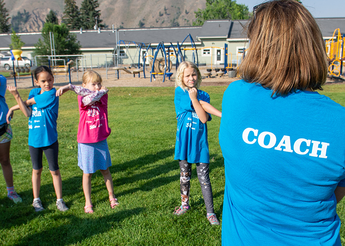Community Health & Engagement
Most significant community health needs identified in new reports
By Taylor MarschnerLast Updated October 27, 2022

Access to mental and behavioral health services, nutrition programs and accessible modes of transportation are some of the most significant health needs in communities throughout southern Idaho, according to the new 2022 Community Health Needs Assessments (CHNAs) released by St. Luke’s.
Every three years, St. Luke’s conducts comprehensive research to understand the most serious health issues and trends in the communities that St. Luke’s serves, including Boise, Elmore, Jerome, McCall, Meridian, Nampa, Twin Falls and Wood River.
Addressing the need for access to mental and behavioral health services is at the top of CHNA’s most significant health needs in every community. Other top health issues vary by each community and include nutrition programs and education, substance use disorder prevention and treatment, housing stability, services for children and families, healthy air and water quality, and accessible modes of transportation.
Identifying and addressing these needs is essential to improving population health, enhancing patient care and lowering health care costs. Health needs identified by the CHNA are prioritized with input from a wide range of community representatives and organizations, as well as national, state and local health data.
“Our CHNAs help us better understand the most significant health challenges our community members are facing” said Angie Gribble, senior director, St. Luke’s Community Health and Engagement.
The St. Luke’s CHNAs include a prioritized list of health needs related to individual health behaviors, clinical care, social and economic factors and the physical environment. The input from community representatives and partners were used to rank the health needs. St. Luke’s analyzed more than 60 potential health needs and health factors and determined the most significant health needs to be:
High priority health needs for each St. Luke’s community:
- St. Luke’s Boise/Meridian (Ada and Canyon counties): Nutrition programs and education, availability of mental and behavioral health services, housing stability, healthy air and water quality.
- St. Luke’s Elmore (Elmore County): Nutrition programs and education, availability of mental and behavioral health services, housing stability, accessible modes of transportation.
- St. Luke’s Jerome (Jerome County): Nutrition programs and education, availability of mental and behavioral health services, academic achievement, accessible modes of transportation
- St. Luke’s Magic Valley Medical Center (Twin Falls and Jerome counties): Nutrition programs and education, availability of mental and behavioral health, academic achievement, accessible modes of transportation
- St. Luke’s McCall (Adams and Valley counties): Nutrition programs and education, availability of mental and behavioral health services, housing stability, accessible modes of transportation.
- St. Luke’s Nampa (Canyon County): Substance use disorder prevention and treatment, availability of mental and behavioral health services, services for children and families experiencing adversity, accessible modes of transportation.
- St. Luke’s Wood River (Blaine County): Substance use disorder prevention and treatment, availability of mental and behavioral health services, housing stability, accessible modes of transportation.
The needs identified in each CHNA act as St. Luke’s foundation for improving community health by establishing community health objectives; focusing efforts on improving the most impactful health needs; working together with partner organizations to improve community health; and developing targeted health improvement programs.
After the publication of the CHNAs for each community, St. Luke’s Community Health and Engagement department creates implementation plans to address each of the high priority health needs, which include programs that take place inside of St. Luke’s hospitals and communities, as well as programs led by nonprofit organizations supported by St. Luke’s.
Gribble says that it takes everyone to help improve the health of the community. “We use feedback and information received from community partners and organizations to identify our initiatives and partnerships to address the health needs.”
Learn more about the CHNAs and read the full reports here.